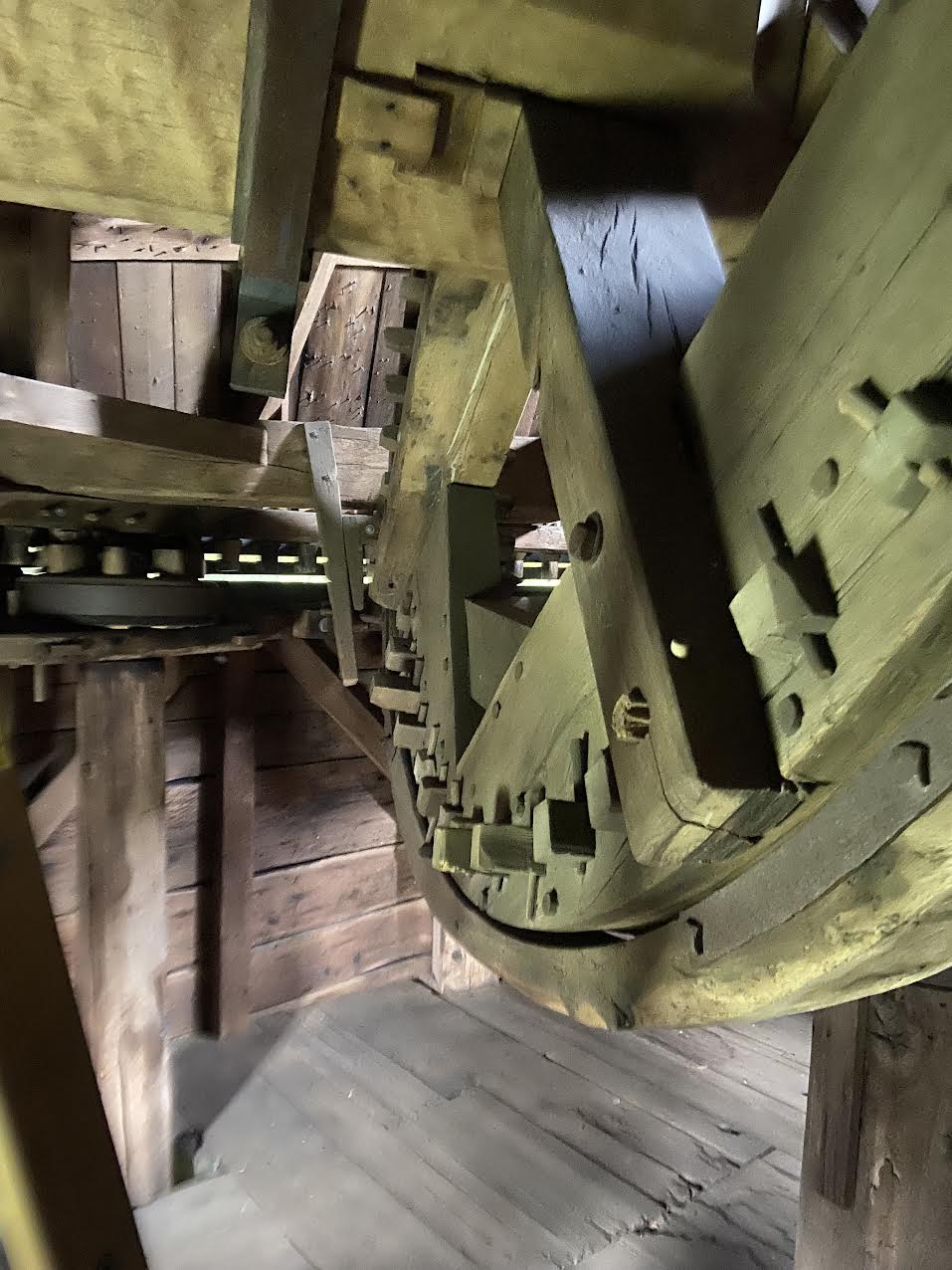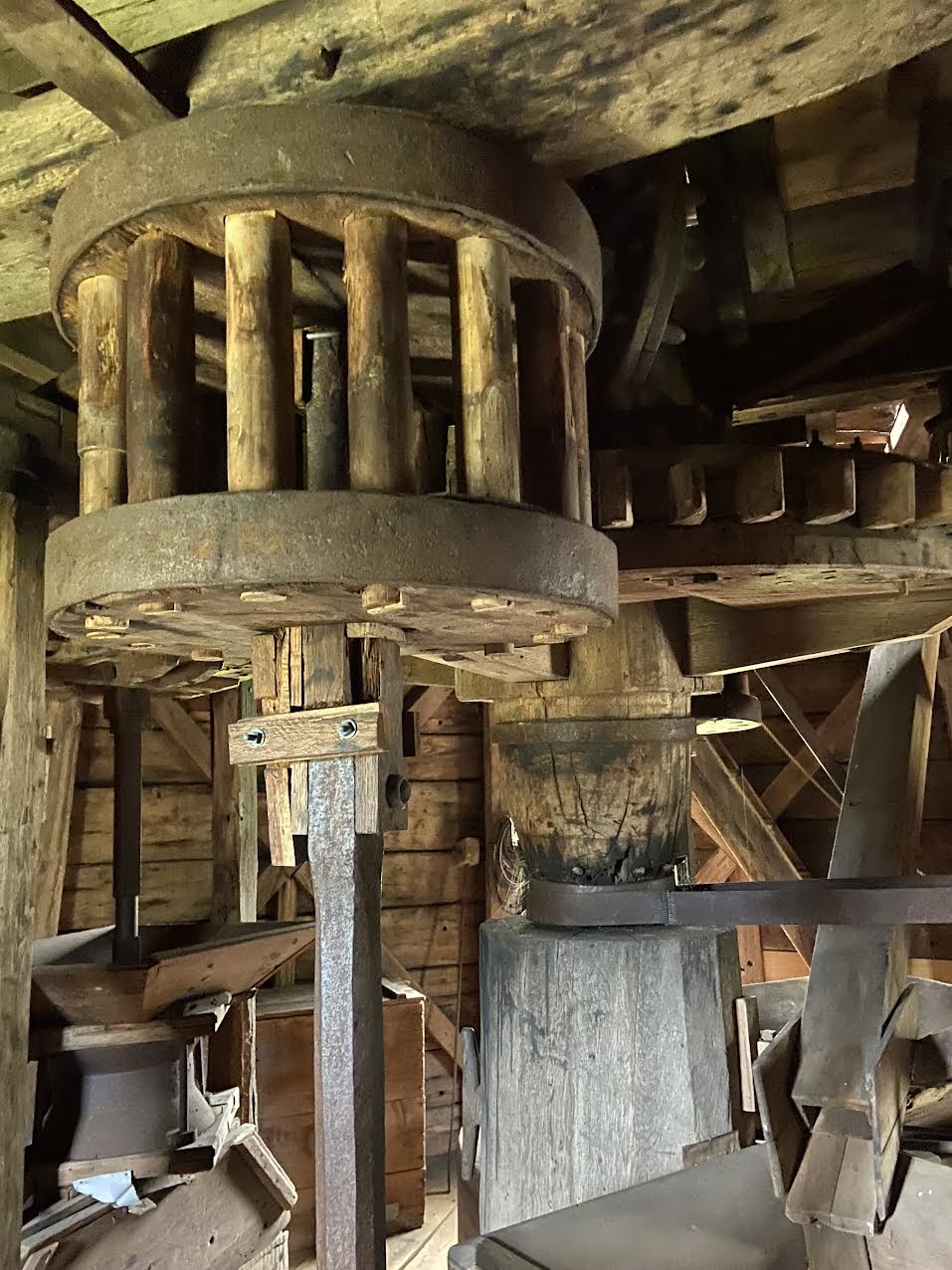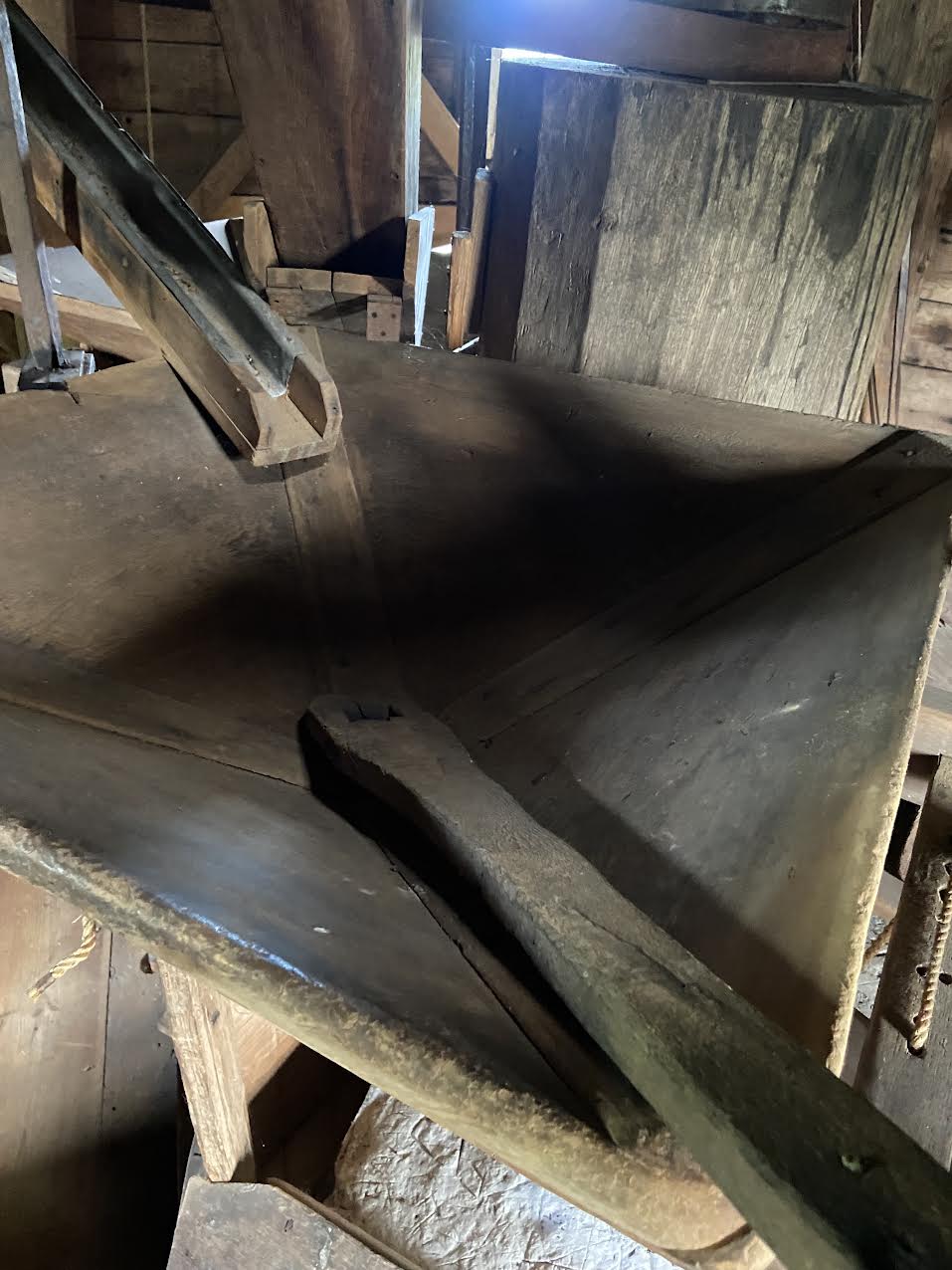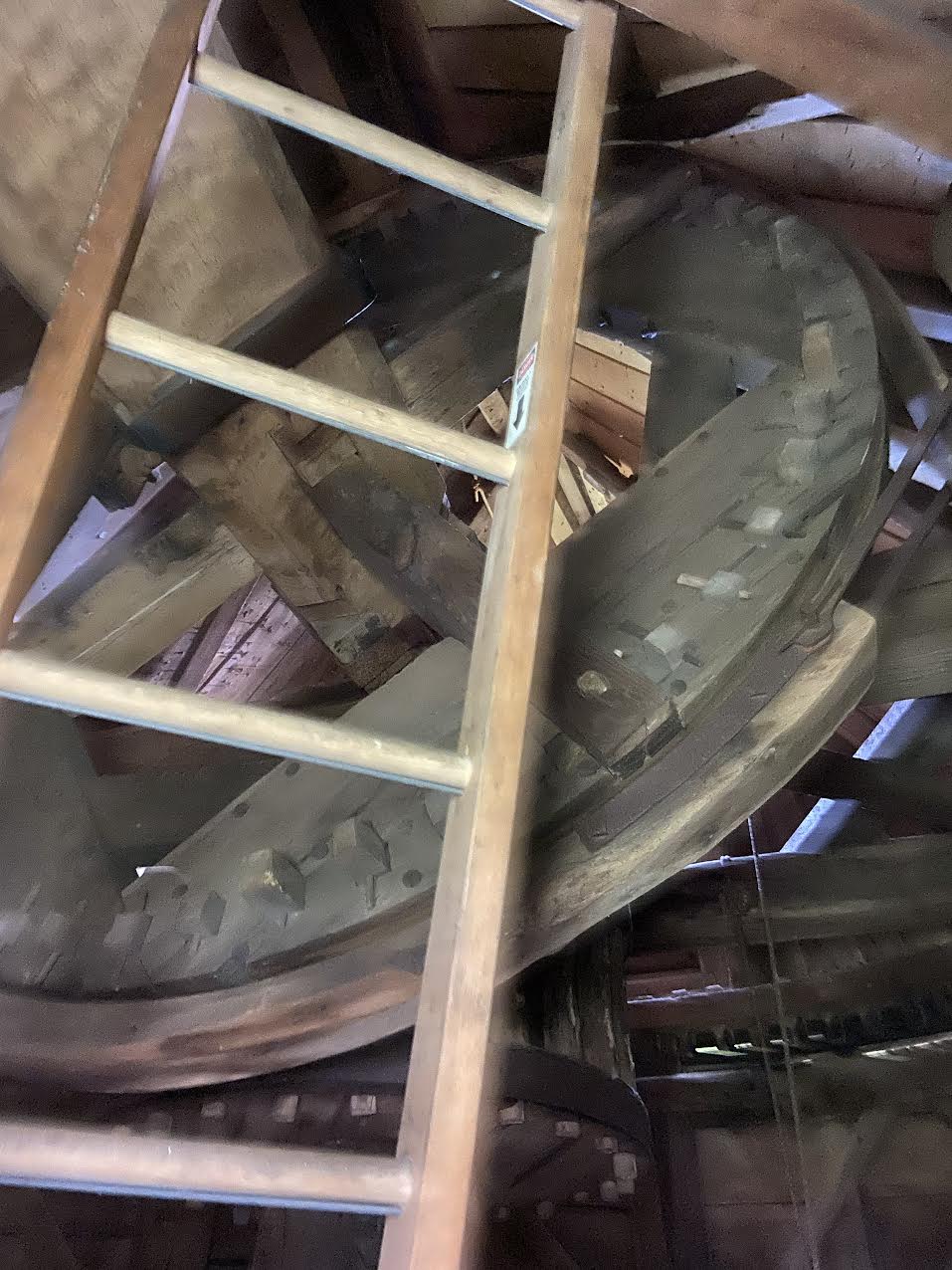If you say you’re going around in circles, you probably mean you’re not achieving anything because you keep returning to the same point or problem. But a hundred a hundred years ago, going around in circles could have meant accomplishing a lot, especially if you operated a windmill.
Last week, I visited Hook Windmill, also known as Old Hook Mill, a historic windmill on North Main Street in East Hampton, New York. It was built in 1806 and operated regularly until 1908.
The Hook Windmill was the last wind-powered grain mill or gristmill. Once I went inside, I was surprised by how big it was. It’s a two-story structure.
The mechanics of the mill fill most of the building. These large wooden gears, levers, shafts and wheels are fill most of the space.
Even after our guide, Francine, explained, I was still confused about how the mill worked. I scratched my head, looking at the drawings, trying to figure out the wheat’s route up and down the two-story structure.
Francine mentioned that a local clockmaker named Nathanial Dominy discovered the windmill cap could be turned so the blades could face the changing location of arriving wind not just by using a long “tail pole” with a wheel at the end—which could move along the ground as people pushed it, dragging the cap way up at the top along—but by the operation of new gears.
The wind’s energy, harnessed by the windmill’s 40-foot sails, is transferred via shafts, cogs, and belts to drive one or more pairs of millstones. Grain, oats, and corn fed between the rotating millstones crushed and ground into meal.

The mill I toured was the third Old Hook windmill built on the site and was completed in 1806.

English windmills, like the ones in the Hamptons, spin clockwise. Dutch windmills spin counterclockwise. Many people believe the difference is due to how the mills catch the wind or how the millers work the mills. When standing still, the position of a windmill’s wings can indicate certain occasions.
Francine told us that the windmill produced 5,000 pounds of wheat, corn, and oats.
I climbed two flights of stairs to see the inner workings of the mill. The stairs are extremely narrow and steep. I had to hold on to a rope as I descended. It felt like I was inside a giant watch or clock. The device was so massive it was hard to believe only one man was needed to operate the mill.
The handwriting on the wall is not graffiti. The millworkers signed their names on the door to document their efforts. One man operated the device.
Windmills were considered farm equipment, which could be bought, sold, and moved from place to place. It’s hard to believe a structure housing such sophisticated mechanics could be moved so easily.

Why They Stopped Using Windmills
The first steam-powered mill was built in Bridgehampton in 1850. And when the first steam-powered locomotive hauled its train on tracks from New York City in 1872, it was possible now to order sacks of flour and grain from a factory up-island and have it on the East End later that same day. Thus ended the age of the beautiful old windmills.
Do You Feel Like You’re Going In Circles?
If you’re feeling like there’s nothing you can do to make living with diabetes easier, it can be helpful to meet with a certified diabetes care and education specialist (CDCES) and a mental health practitioner. Asking for help is not a sign of weakness. Problem-solving with the aid of experts can help you deal with the negative impact that having diabetes may have on your life, relationships, and goals. They can help you see your diabetes challenges in a new, more positive way. Even if you feel fine, introduce yourself to a therapist to keep phone numbers handy if anything challenging arises.
Luther Vandross recorded the song Going In Circles for his Songs album in 1995. The song was written by Jerry Peters and Anita Poree, and originally performed by The Friends of Distinction on their 1969 album, Grazin’, reaching number 15 on the U.S. Hot 100, and number three on the R&B chart, selling over a million copies.
Educate Your Circle on How to Treat a Low Blood Sugar
Could you show your circle where you keep your fast-acting carbohydrates and how much is needed to return blood sugar to normal? Everyone is different. For some, it is 5 grams of fast-acting carbs, for others 10, 15, or maybe 20 grams. It all depends on how low your blood sugar is at the time, how much insulin is on board, and what you are physically doing.












